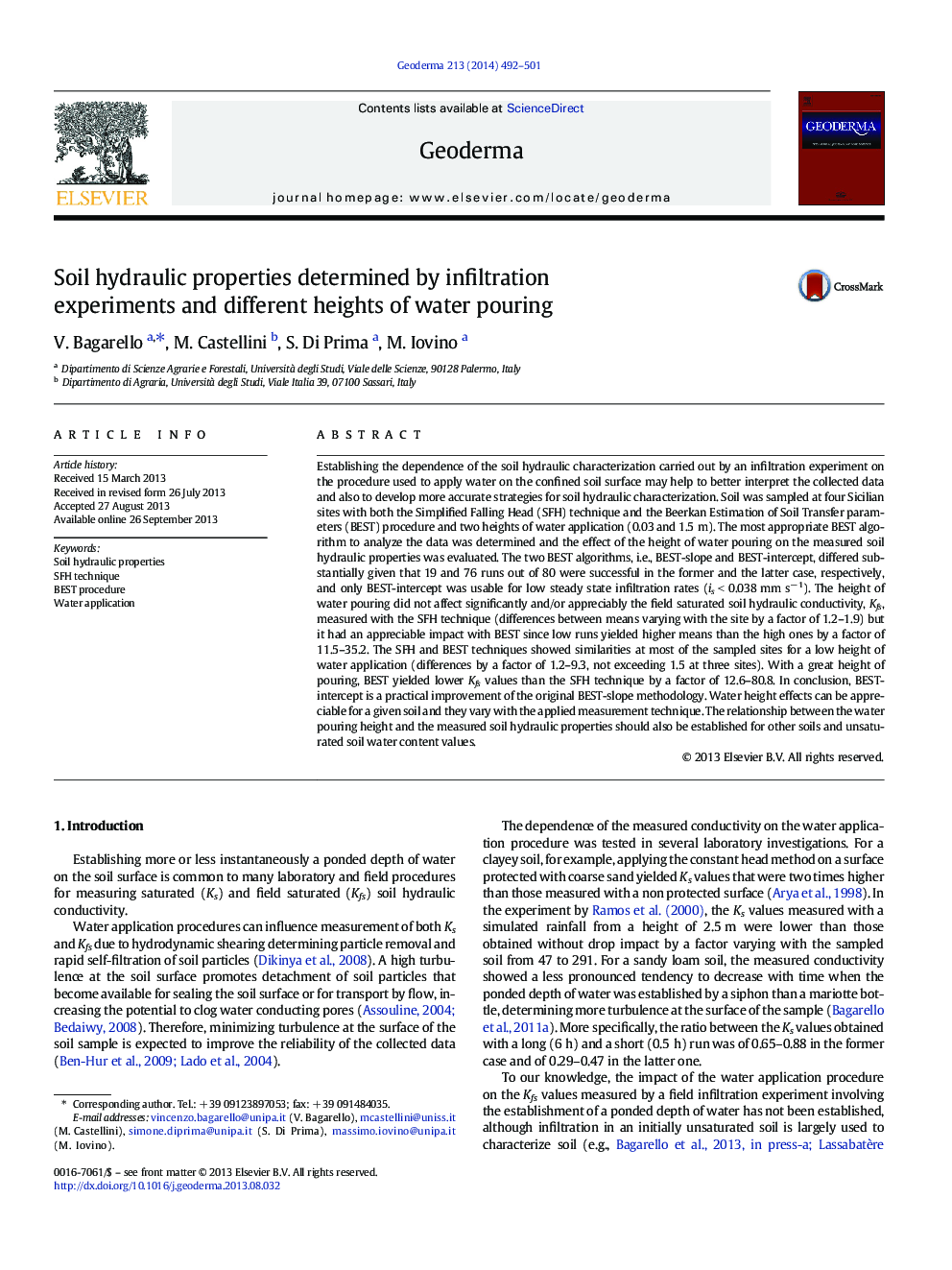| کد مقاله | کد نشریه | سال انتشار | مقاله انگلیسی | نسخه تمام متن |
|---|---|---|---|---|
| 6409019 | 1629479 | 2014 | 10 صفحه PDF | دانلود رایگان |
- Effects of water application procedure for an infiltration run need to be established.
- The SFH technique was practically insensitive to the height of water pouring.
- For BEST, low runs yielded higher saturated hydraulic conductivities than high runs.
- Differences between methods also varied with the height of water pouring.
- Water height effects can be appreciable and they vary with the applied technique.
Establishing the dependence of the soil hydraulic characterization carried out by an infiltration experiment on the procedure used to apply water on the confined soil surface may help to better interpret the collected data and also to develop more accurate strategies for soil hydraulic characterization. Soil was sampled at four Sicilian sites with both the Simplified Falling Head (SFH) technique and the Beerkan Estimation of Soil Transfer parameters (BEST) procedure and two heights of water application (0.03 and 1.5 m). The most appropriate BEST algorithm to analyze the data was determined and the effect of the height of water pouring on the measured soil hydraulic properties was evaluated. The two BEST algorithms, i.e., BEST-slope and BEST-intercept, differed substantially given that 19 and 76 runs out of 80 were successful in the former and the latter case, respectively, and only BEST-intercept was usable for low steady state infiltration rates (is < 0.038 mm sâ 1). The height of water pouring did not affect significantly and/or appreciably the field saturated soil hydraulic conductivity, Kfs, measured with the SFH technique (differences between means varying with the site by a factor of 1.2-1.9) but it had an appreciable impact with BEST since low runs yielded higher means than the high ones by a factor of 11.5-35.2. The SFH and BEST techniques showed similarities at most of the sampled sites for a low height of water application (differences by a factor of 1.2-9.3, not exceeding 1.5 at three sites). With a great height of pouring, BEST yielded lower Kfs values than the SFH technique by a factor of 12.6-80.8. In conclusion, BEST-intercept is a practical improvement of the original BEST-slope methodology. Water height effects can be appreciable for a given soil and they vary with the applied measurement technique. The relationship between the water pouring height and the measured soil hydraulic properties should also be established for other soils and unsaturated soil water content values.
Journal: Geoderma - Volume 213, January 2014, Pages 492-501
